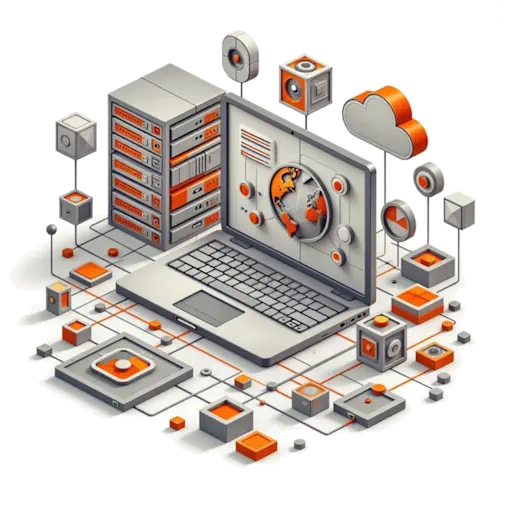


Custom business web applications with modern architecture and usability principles are tailor-made software solutions designed to meet the specific needs and requirements of businesses. These applications are built using contemporary development practices and prioritize user experience (UX) through intuitive design and functionality. These applications ensure efficiency, scalability, and a pleasing user experience while aligning closely with the organization’s requirements. They combine cutting-edge technology to create digital tools that enhance productivity, streamline processes, and drive success.
Custom Business Web Applications: These are web-based software tools or platforms designed from the ground up to meet the unique needs and goals of a specific business or organization.
Modern Architecture: They include the use of microservices, where the application is divided into smaller, independent components for flexibility and scalability. It also embraces an API-first approach, emphasizing the importance of clean, standardized APIs that enable seamless integration with other systems, services, and third-party applications.
Usability Principles: Usability principles involve user-centered design, meaning that the application is created with a deep understanding of its users.
Responsive Design: Applications must be responsive, meaning they are designed and developed to adapt seamlessly to various devices and screen sizes.
Intuitive User Interface (UI): The UI is designed with simplicity and intuitiveness in mind. Users should be able to navigate the application effortlessly, complete tasks with ease, and find information quickly.
Security: Robust security features are integrated into the application to protect sensitive data and user information: data encryption, authentication mechanisms, authorization controls, and protections against common security vulnerabilities.
Performance and Scalability: Modern web applications are built to handle increased user loads and data volumes.
Cloud Integration: Many modern applications leverage cloud services for hosting, storage, and scaling. Cloud platforms like AWS, Azure, and Google Cloud offer flexibility, reliability, and cost-effectiveness.
Continuous Improvement: The development process often involves continuous integration and continuous deployment (CI/CD) pipelines, automating testing, building, and deployment.
Analytics and Monitoring: Tools and analytics platforms are integrated into the application to monitor performance, user behavior, and application usage.
User Training and Documentation: To help users make the most of the application, user training materials and documentation are provided.
Initial Consultation & Idea Discovery.
We kick off with an in-depth conversation about your project—uncovering your vision, exploring the best technical approaches.
Protecting your ideas is our top priority: we’re happy to sign an NDA at this stage to keep everything you share completely confidential.
Roadmap
We provide initial feedback on the idea, including a general complexity assessment. Together, we explore various implementation approaches. From this, we define a high-level roadmap for moving forward.
Scoping the First Iteration
We define and estimate the scope of the first development iteration.
This can be structured as a fixed-price engagement or based on time and materials, depending on the project’s nature and client's preferences.
Development & Testing: Iteration 1
Our team develops the first iteration, followed by thorough internal testing to ensure quality, stability, and alignment with your requirements.
Infrastructure Setup & Delivery: Iteration 1
We configure all necessary IT infrastructure to host your project securely and efficiently—whether it's cloud-based, on-premises, or hybrid. Once the environment is ready, we deploy the first iteration for your review and feedback.
Scoping, Development and Delivery of Next Iterations
Based on feedback and evolving needs, we define the scope and estimate the next iteration. Then we carefully develop, test and deliver it.
This process repeats as long as you have new requirements and ideas.
Ongoing Technical Support
Even after delivery, we don’t disappear. We offer ongoing technical support, maintenance, and monitoring to ensure your system remains reliable, secure, and up-to-date.